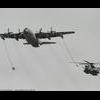Safety Pilot Time
-
Members Online
- Mortarion42
- Red Leader
- Rwsavory
- Paul Thomas
- OR75
- ta2too
- Marc_B
- redbaron1982
- Greg Ellis
- Patrick Horan
- amillet
- YeloSub
- Hank
- richardbrochu27
- Smiles201
- philiplane
- Pinecone
- Vance Harral
- 201er
- kortopates
- bigmo
- finnicky7
- N201MKTurbo
- ohdub
- TheMooneyAnomaly
- Slick Nick
- Matthew P
- madjano
- DanM20C
- cbarry
- bencpeters
- TNIndy
- toto
- eman1200
- Tx_Aggie
- dcastor


Recommended Posts
Join the conversation
You can post now and register later. If you have an account, sign in now to post with your account.